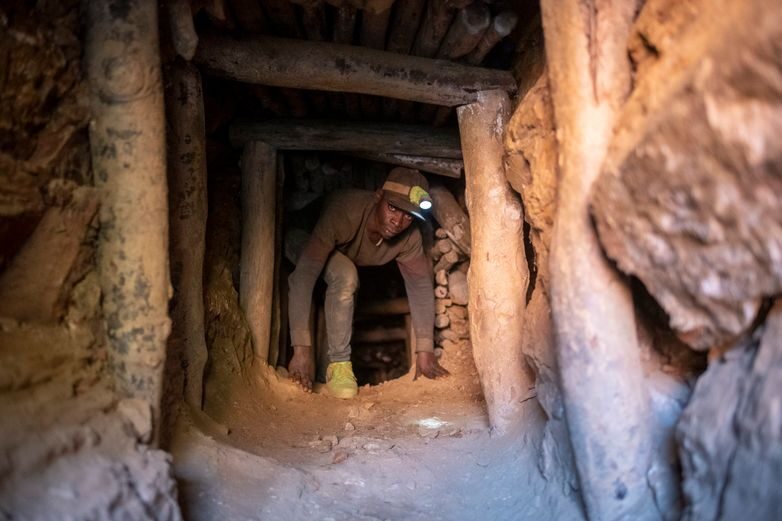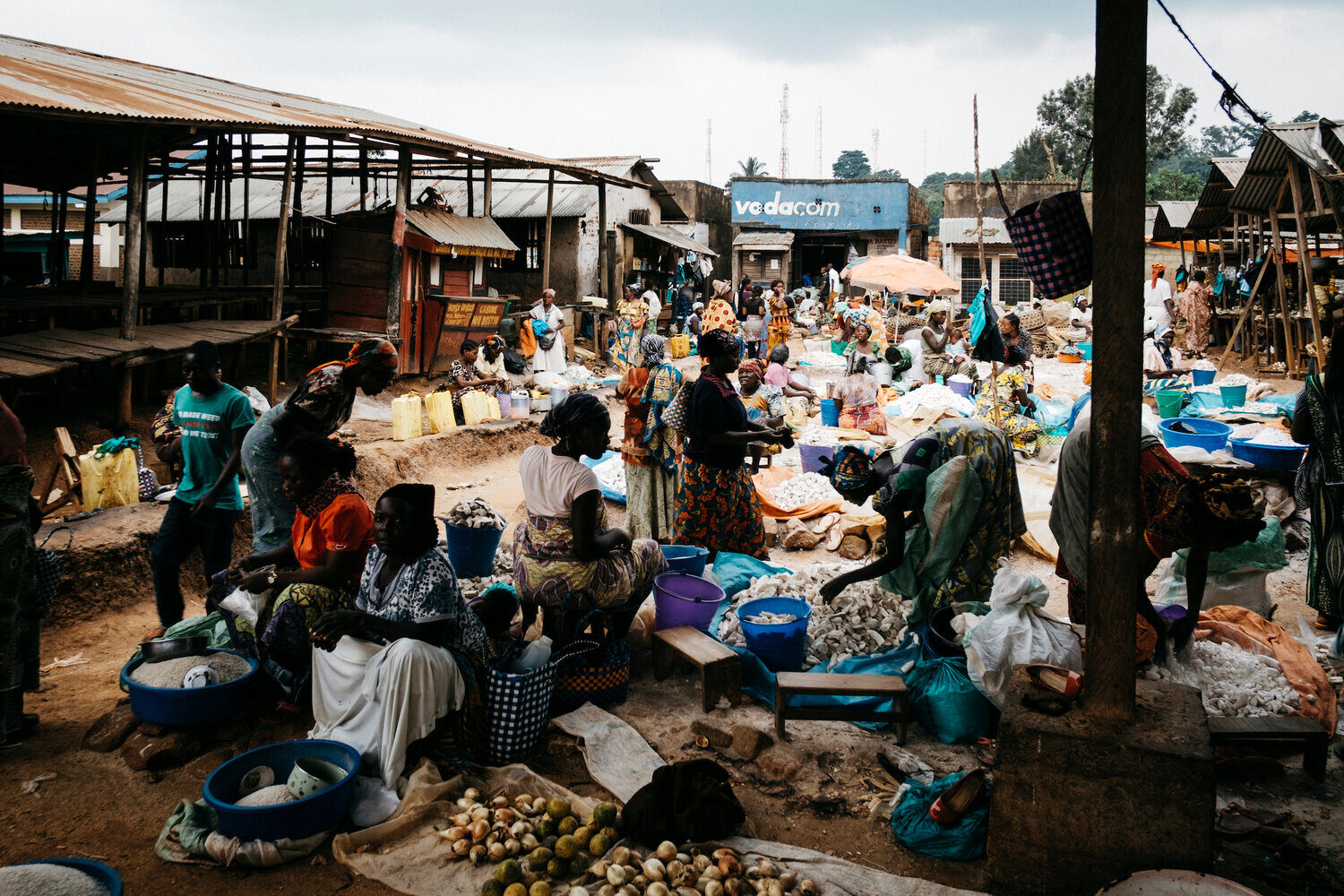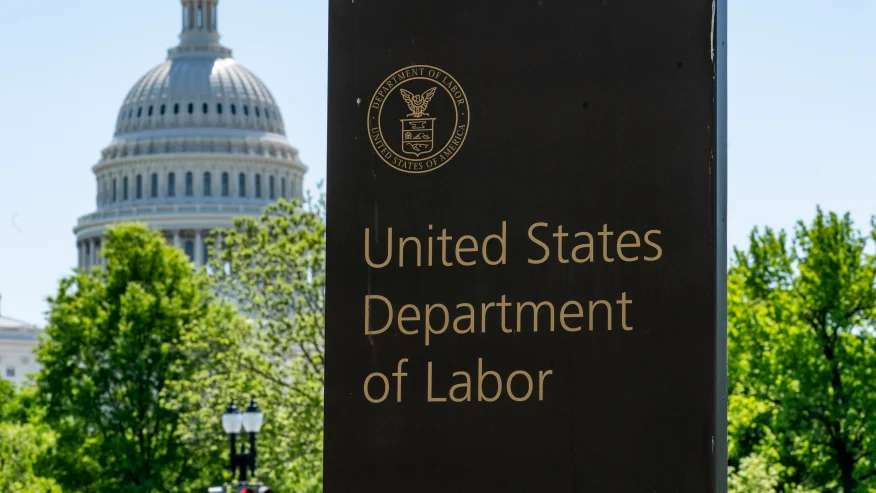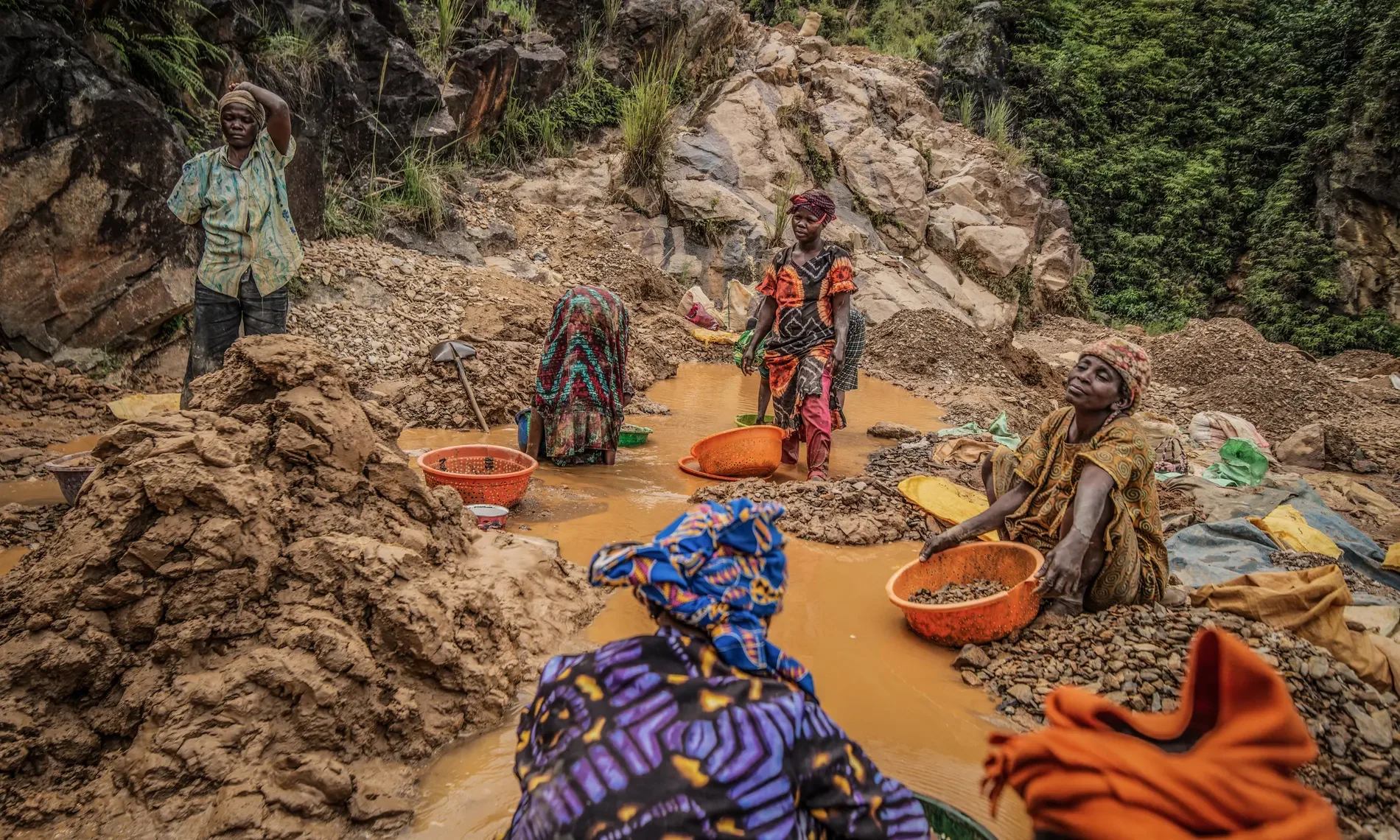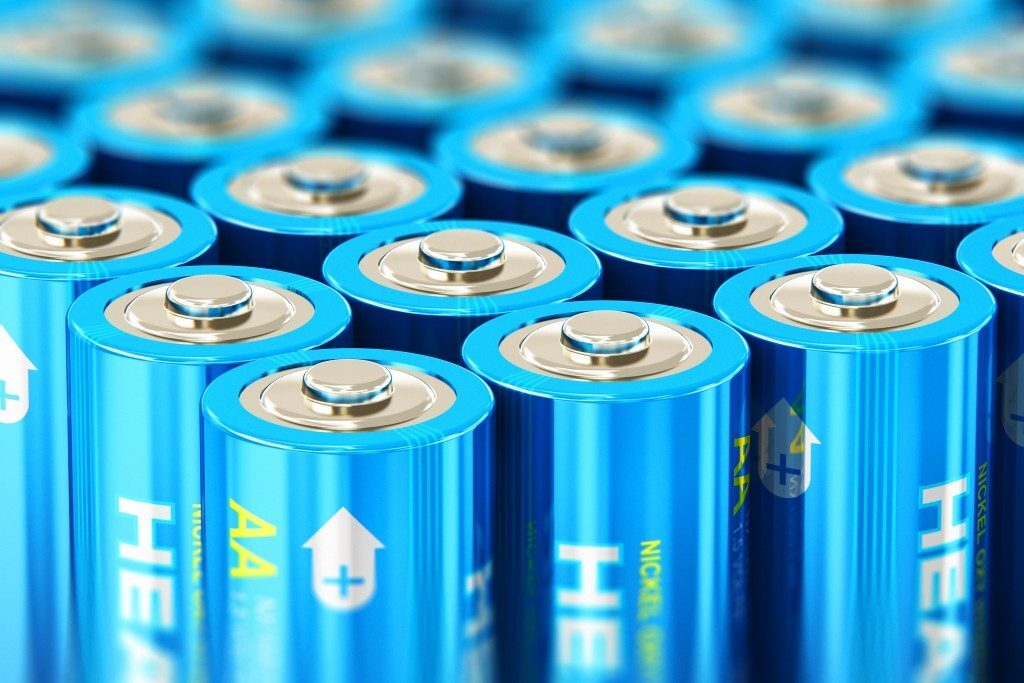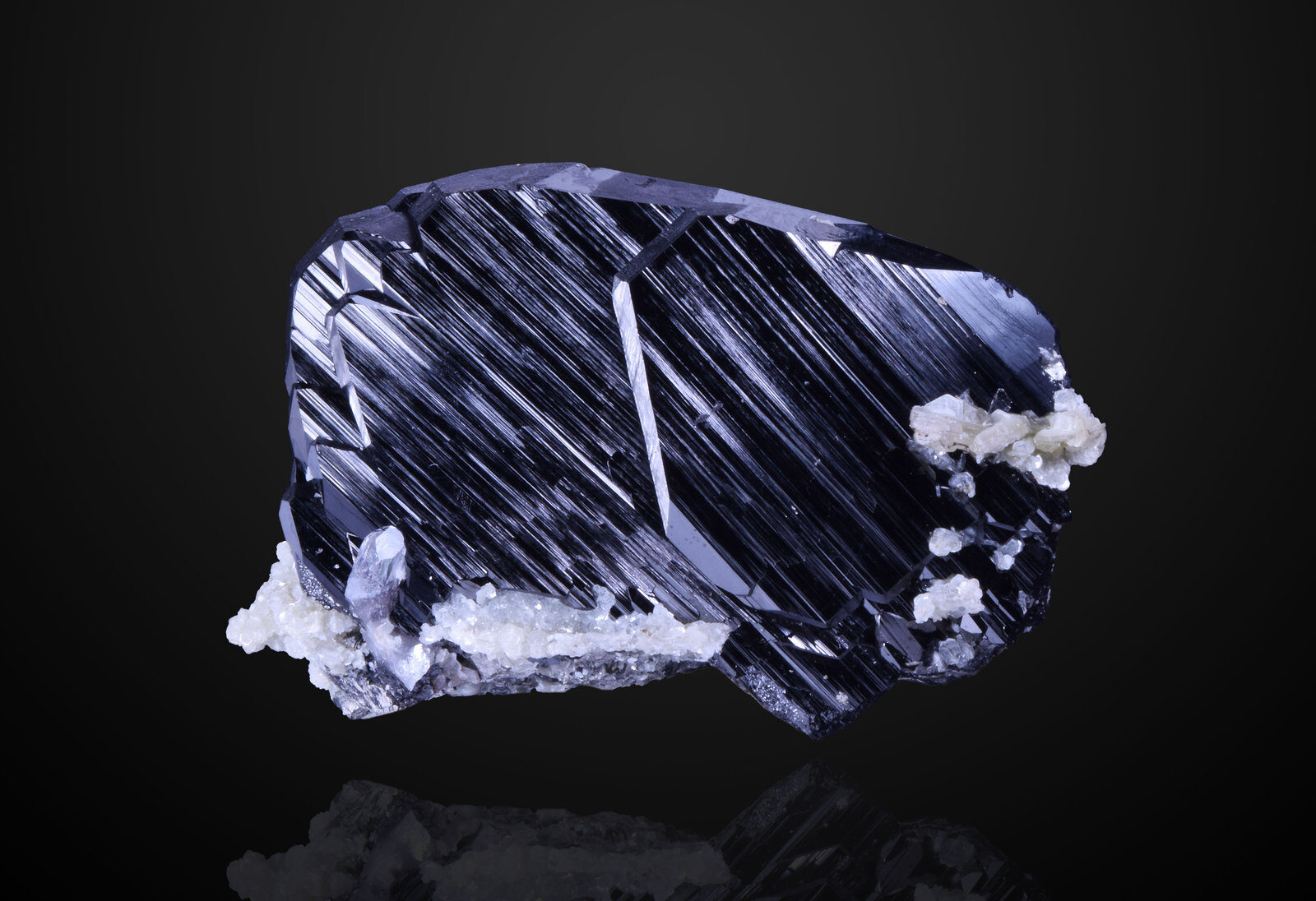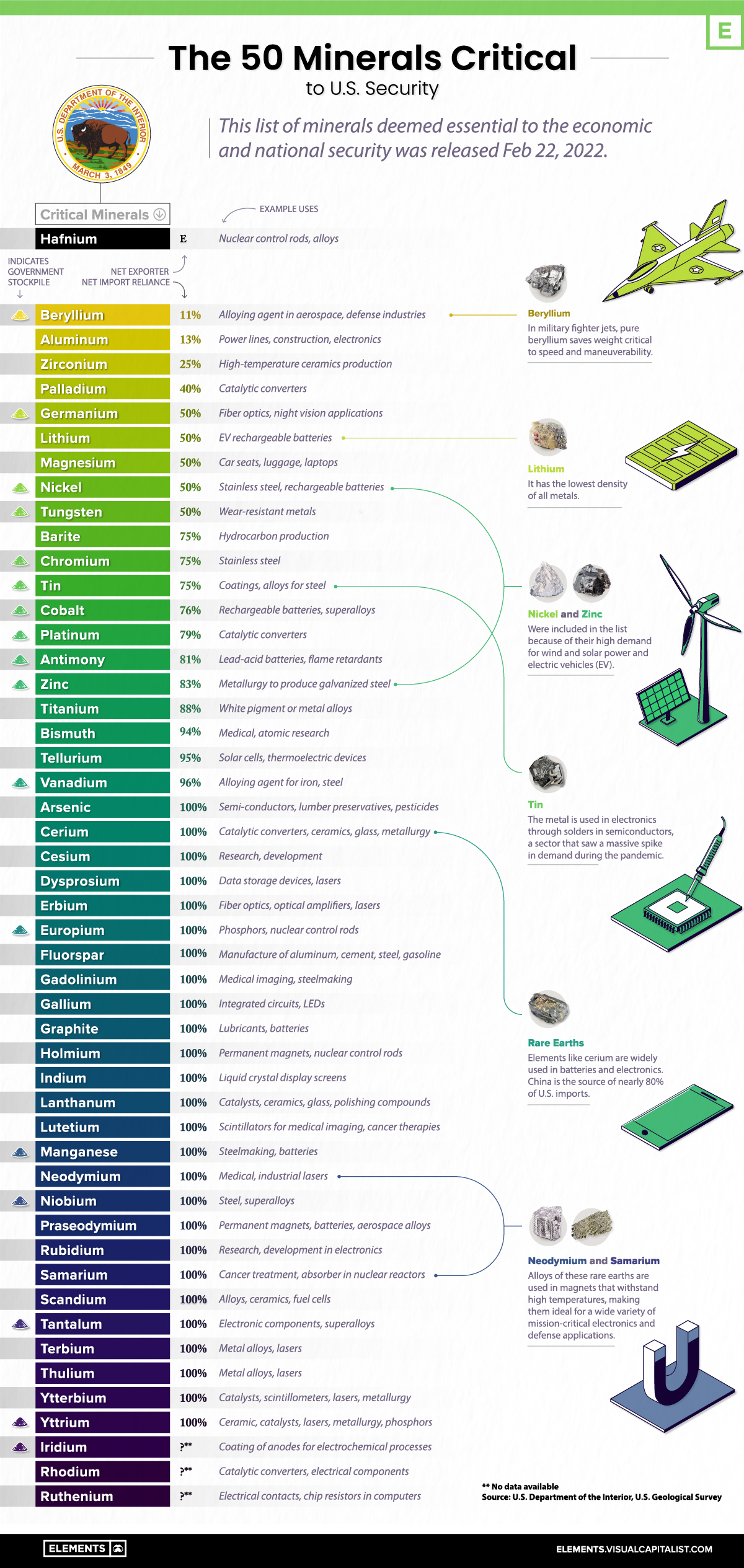Tracking Down Blood Gold in the Democratic Republic of Congo
A string of lights hangs from the ceiling, glowing in myriad bright colors, as if a child’s birthday party were underway. Raymond is sitting on a plastic chair under the lights, wearing a bright red cowboy hat and a yellow T-shirt with a large bottle of beer set on the table in front of him. Raymond laughs a lot and then pulls out his phone and scrolls through the photos.
The first pictures show a number of children, but they aren’t playing or carrying their book bags – they’re holding guns. And instead of wearing school uniforms, they’re in camouflage. Raymond is also in the photos with the rebels, looking far more aggressive. He’s not wearing a cowboy hat and is instead holding a gun and posing next to the children. He scrolls further. At some point, the photos stop, and dozens of porn videos follow. Embarrassed, he turns off his mobile.
We are visiting the Mai-Mai Yakutumba in South Kivu in the Democratic Republic of Congo. The notorious rebel group dominates this region, massacring entire villages, raping women and extorting the populace – all to expand their power. And they control the gold business.
Raymond refers to himself as the secretary general of the Mai-Mai rebels, but it is hard to tell if the title really exists or if it is just something he has made up. He’s an emissary of sorts, because the rebel chief himself, William Yakutumba, is scheduled to arrive that night. For now, though, the DER SPIEGEL team must content itself with hanging out under the string of lights and listening as the secretary general shares his war stories.
At some point, the beer runs out and we are assigned rooms in the rebel’s flophouse. They can only be locked from the outside. The next morning, Yakutumba still hasn’t arrived, but there are serious-looking older men who again query us about what we want to ask the boss. Raymond with the cowboy hat is rebuked by them in Kiswahili. They tell him he doesn’t look tough enough and that the foreign journalists aren’t going to get the correct impression. Ultimately, though, the boss doesn’t show up at all – and no real reason is given for his absence. Raymond seems a bit disappointed.
Ultimately, though, the group does provide DER SPIEGEL, and the German international broadcaster Deutsche Welle, with access to the notorious gold mines around Misisi. It is the first time international journalists have been allowed inside. And there’s a reason for that: Gold is the main source of income for the Mai-Mai Yakutumba rebels and they use it to finance their armed conflict. The precious metal eventually ends up in rings and necklaces in Europe and the United States, but beneath that luster is the blood of the rebels’ victims.
Victims like Esther Nanduhura’s husband. It was early one morning in October 2021, the sun hadn’t even fully risen, when the fighters arrived in Bibokoboko, the village where they lived. They charged in from three sides with machine guns, machetes and torches. “I was sure at that moment that I was going to die,” Nanduhura says.
She’s a member of the Banyamulenge ethnic group, a minority that migrated from Rwanda and other regions generations ago. The Mai-Mai Yakutumba view them as their main enemy, as alien Tutsies who must be exterminated. They have already driven the Banyamulenge out of large parts of South Kivu and Bibokoboko is one of their last strongholds, guarded by United Nations peacekeepers and the Congolese military.
Nanduhura managed to find a hiding place, but her 80-year-old father-in-law wasn’t fast enough. The rebels shot him to death without hesitating. In the end, the Mai-Mai also found the 35-year-old and her family, making them go on a forced march that lasted for several days. After two days, they dragged her husband away and he never came back. Nanduhura later learned he had been hacked to death with a machete. “They threatened to kill us too, we didn’t get anything to eat and the children kept fainting,” she recalls. The prisoners weren’t released until a week later, and only a few returned to their village.
Nanduhura is safe now and lives in a large city far away from the horrors. “People in Europe buy gold from the rebels, thus financing the weapons they use to kill us. This has to end,” she demands.
In other words, the men under the string of lights, drinking beer in their red cowboy hats and showing off their photos and porn, are essentially murderers and rapists.
The Mines of the Rebels
Two porters carry mineral sand on their bicycle down into the valley. The path down is very dangerous.
The road to the Mitondo gold mine is challenging, to say the least. The road gets narrower and narrower behind the town of Misisi. At some point, the old Land Cruiser gets stuck in a deep water hole, and from that point on, it is only possible to continue by motorcycle. Another motorcycle approaches with two sticks attached in an upright position behind the driver. Something is tied tightly between the sticks – it looks like a big sack or a mummy wrapped in cloth bandages. The motorcycle is carrying a body, which has been positioned upright. A miner has died, as so often happens. His body is now driven for hours over bumpy roads, back to his family, who will bury him.
After a few kilometers in the direction of Mitondo, it is no longer possible to go further by motorcycle and the journey continues by foot on a steep path. The climb is relentless, with the hot sun beating down, even though it is already late afternoon.
The mineral sand is carried down into the valley from the mines in sacks. From there, it is transported further using muscle power and bicycles.
Suddenly a rattling can be heard, it gets louder, and someone gasps. “Look out” someone yells from above. Then a rickety contraption emerges, a bicycle the men cobbled together themselves, but without working brakes. A young man holds the handlebars, his feet in rubber boots dragging on the ground, panic can be seen in his eyes, even though he somehow manages this grueling descent every day. He has loaded large sacks with the ore and now has to find a way to transport them down into the valley, using his rubber boots as brakes.
Eventually the path flattens out a bit, winds around a rock to the left, and a dystopia suddenly comes into sight. Dozens of makeshift huts covered with blue tarpaulins line the road. People can be seen lying, squatting or sitting in them. Many still have their headlamps on their heads, their naked torsos shimmer brightly, they are completely covered in mud. Some look up briefly as they notice the visitors, but most continue to doze lethargically, their eyes half open. They don’t even seem to have the strength to nod in greeting anymore.
The miners live in these makeshift dwellings for weeks and months at a time and work in the mines every day. They eat in makeshift restaurants in a secluded parallel world. This young man is trying to earn some extra money by selling grooming products and alcohol.
Behind the tents, two steep slopes rise to the left and right with a small stream flowing between them. Workers with shovels can be seen everywhere digging artificial pools or heaving brownish mud into wooden troughs and sieves. Then, suddenly, there’s a loud burst of thunder, a few men quickly jump to the side, and seconds later it becomes clear why: Huge chunks of stone are rolling down the slope toward where the workers had been standing only a moment before. A life-threatening job even outside the actual tunnels.
Only at second glance does it become clear that the steep slopes are littered with tunnels, barely more than a meter high, supported by thin wooden beams. The wet rock with the gold ore is pounded out in these tunnels using a hammer and chisel. Many don’t survive the search for the precious metal.
The United Nations issues an annual report on the Democratic Republic of Congo with a special focus on armed groups and their access to raw materials. The mines around Misisi make a regular appearance in that report. The experts write: “The Mai-Mai Yakutumba control the Makungu and Mitondo mines.” In Mitondo, the report states, the rebels forcibly drove out the Congolese army in December 2021 and established their own administration.
But armed men are nowhere to be seen. A group leads us through the mine, with some introducing themselves as representatives of the local gold cooperative, one man as a security officer, others cannot be identified. No one wears a uniform. Later, the miners say that several rebels dressed in civilian clothing had been part of the entourage. The boundaries are often blurred, with the rebels working hand in hand with government security forces and sharing the profits from gold mining.
James Mulemi*, 22, takes a break from washing the slurry in a yellow plastic container to talk about working in the mine. A man standing near him introduces himself as an intelligence officer, whatever that might mean. But James still speaks openly about the rebels, as if it were the most normal thing in the world.
“They’re up there in the mountains,” the wiry teenager tells us, pointing to the slope next to him. He’s referring to the Mai-Mai with the guns who control everything here. He says that although they may be out of sight, they can still see everything that takes place down below – an invisible power that determines the lives of miners. In confidential conversations, other workers confirm James’ descriptions.
James then discusses how the rebels exert control. For every gram of gold he extracts from the mountain, he has to pay a fee: first to the Mai-Mai, then to the army and, next, to the cooperative, to the Mining Ministry and the local village chiefs. He says they’re all aware of what the other is doing and that they leave each other alone – the main thing is that the money keeps flowing. James recounts how the rebels kept meticulous records. “Since they arrived, we have had to pay the money upfront. Those who don’t are beaten brutally. There’s very little left for us to live on.”
After the beatings, usually with a heavy drill rod, the victims are then placed in the “hole,” as they call it. James describes it as being about 3 meters deep and 1 meter wide, adding that they are thrown in if the don’t pay their “taxes,” with as many as 10 people in the hole at a time. Several people claim they were forced to stay there for days without food. The Mai-Mai rebels didn’t respond to questions about the accusations submitted to them by DER SPIEGEL via WhatsApp.
Brutal Working Conditions
Another gold mine, Makungu, is located just a few hundred meters away from Mitondo, though they look almost identical. In one of the narrow tunnels, a light suddenly flickers on, the glow growing brighter and brighter until, finally, a mud-caked figure emerges from the gloom. Michael* rolls a bag of gold ore out of the tunnel, his eyes only slowly getting used to the daylight.
Michael is on guard, he owes the Mai-Mai money. He had recently ran into financial troubles and didn’t have the necessary protection money. “I was in the hole for a week and lost 10 kilos,” he says. You can still see the traces of the torment – he looks haggard despite his muscular body, with sunken cheeks. His tormentors could come back at any moment, and he still doesn’t have the money to pay them.
“I was making twice as much before the rebels came,” Michael says, adding that some of his co-workers have even been killed. Other miners confirm the torture and the violence, but say they haven’t been witness to murders.
Yet working conditions here are bad enough without the Mai-Mai. The tunnels are bored several hundred meters deep into the mountainside, and it is pitch dark inside, with only the light of headlamps piercing the darkness. The miners have to hunch as they walk through the tunnels, even crawling on all fours in some places. And the further they advance into the mountain, the hotter it gets, sometimes over 40 degrees Celsius (104 degrees Fahrenheit). The air is so thin that workers use a special breathing technique, shallow and steady, to avoid fainting.
The Dangerous Work of Gold Mining
The tunnels frequently collapse when the timbered beams yet again fail to hold them up. In a single incident six years ago, 20 young men were buried alive in the mine. They didn’t stand a chance. Michael’s brother died in the accident, and his body still hasn’t been recovered to this day. It’s only worth digging for gold, not for the dead. “Everyone here knows they could die at any time. But there’s no other way to make money in the area, so we keep going,” the 21-year-old says.
The Path of Gold
Below the gold mines, not far from the village, a deafening grating noise fills the air as a cement mixer-like device crushes the rocks that have been carted out of the mine. The stone powder is then mixed with water to form slurry and sieved several times. After a time, mercury is added, the chemical that separates the gold from the unwanted residue, ultimately yielding porous yellow nuggets that are some of the best in the world.
M’mbongecha Nyange stands next to the noisy machines built by his cooperative. This is where the traders come to buy the valuable nuggets before reselling them. Asked about the rebels and the role they play in the mines, Nyange answers: “In the past, the armed groups used to be here, but not any longer. None of it is true.” Every gram is supposedly strictly accounted for. Yet, according to official statistics, only about 5 kilograms (11 pounds) of gold were produced at Misisi between November and April 2022, an impossible figure given the daily output at the mines.
There is no receipt or even a certificate – the price is negotiated after reviewing the current rate for gold. “My boss is in Bukavu, that’s where the gold goes. He pays me to get him supplies and doesn’t ask questions,” says one shopkeeper.
Everything in the gold-mining town of Misisi revolves around the precious metal. The gold is resold in many shady stores. The owners report that the Mai-Mai collect protection money from them, as well.
U.S. officials estimate that more than 90 percent of Congo’s gold is traded illegally, and it is impossible for consumers to know whether the product they are buying is clean or not. For the Congolese state, this means that millions in tax revenues are lost every year, while a corrupt elite shamelessly enriches itself.
The traders bring the gold from the mines to Misisi.
The precious metal is taken from city to city along the eastern border of the Democratic Republic of Congo to Bukavu.
From Bukavu, it usually continues further across the border into Rwanda, either smuggled in or officially exported.
From there, the traders ship the gold, sometimes through intermediary sites, often to Dubai.
The city in the United Araba Emirates is considered the global trade center for gold.
Bukavu is a notorious trading hub on the Rwandan border. Gold from all over the south of the country passes through the city, and from here, it is either smuggled to Rwanda or other East African countries, or it is officially exported with fake certificates. Then, the journey of the coveted precious metal continues to places like the United Arab Emirates, one of the world’s largest trading centers for gold, before finally ending up as jewelry in places like Paris, Berlin or Madrid.
The Godfather of the Gold Business
One name has been in the headlines repeatedly in recent years: Alain Goetz. The Belgian is a godfather of sorts in the gold business in Africa. He set up large gold refining plants in Uganda and Rwanda and has allegedly negotiated with an armed group in the 1990s. He has also been convicted of money laundering and fraud. At times this year, he hasn’t even able to use his credit cards, laments Goetz in an interview with DER SPIEGEL.
In March, the U.S. Treasury Department imposed sanctions on Goetz because he was allegedly sourcing gold from regions controlled by armed groups, including the Mai-Mai Yakutumba. Goetz’s network of companies generated hundreds of millions of dollars a year in revenues from trade in Congolese gold. “These illicit acts provide income for armed groups that threaten the peace, security and stability of the Democratic Republic of Congo,” a Treasury Department press release stated in justification of the sanctions.
The United States has slapped Alain Goetz, a Belgian citizen, with sanctions for allegedly buying gold that supports the rebels.
For his part, Goetz accuses politicians in Washington of meddling in African affairs. But he also tries to portray himself as naïve. “Conflict gold? That term is very easy to use. Then also bananas, water, everything would be ‘conflict’ in that region. The only things I see as products of conflict are weapons, ammunition and bad people,” he says. Besides, he adds, it’s impossible to know exactly where the gold really comes from. Experts, though, believe that tracking its origin should be the duty of traders, since they earn a fortune with the controversial commodity.
Yasin Somji says he wants to build a flagship gold refining plant in Bukavu.
Goetz’s competitors, meanwhile, are already working on their next steps. On a busy main road in Bukavu, a tall, corrugated iron fence keeps out prying eyes. Behind it, construction workers are laboring away as heavily armed police officers secure the site. Yasin Somji greets his visitors wearing a hardhat and a tight-fitting shirt, walking past huge vaults whose doors are being installed, while brand new machines from Italy are ready for installation. Somji plans to open Congo’s first gold refining plant soon.
When he talks about his plans, he sounds like the opposite of Goetz: young, smart and ethically responsible. He speaks about transparency and the ability to trace the origins of gold. But when asked about the concrete steps, he just repeats, “We will work closely with the government” – not exactly reassuring in a country like Congo.
In any case, he says the mines in Misisi have “great potential.” After all, the gold from the Congo is among the best in the world. The rebels feel the same.
*We have changed the names of the main protagonists in this story to protect their identities.
Source: Spiegel

